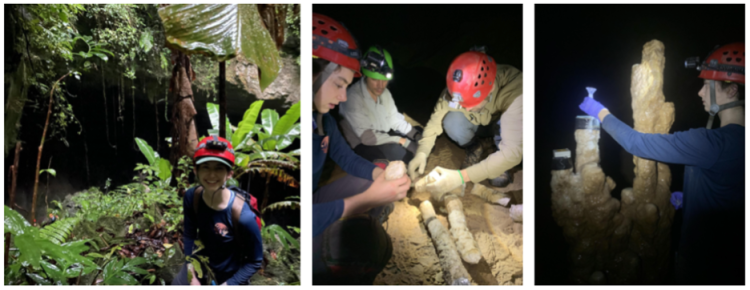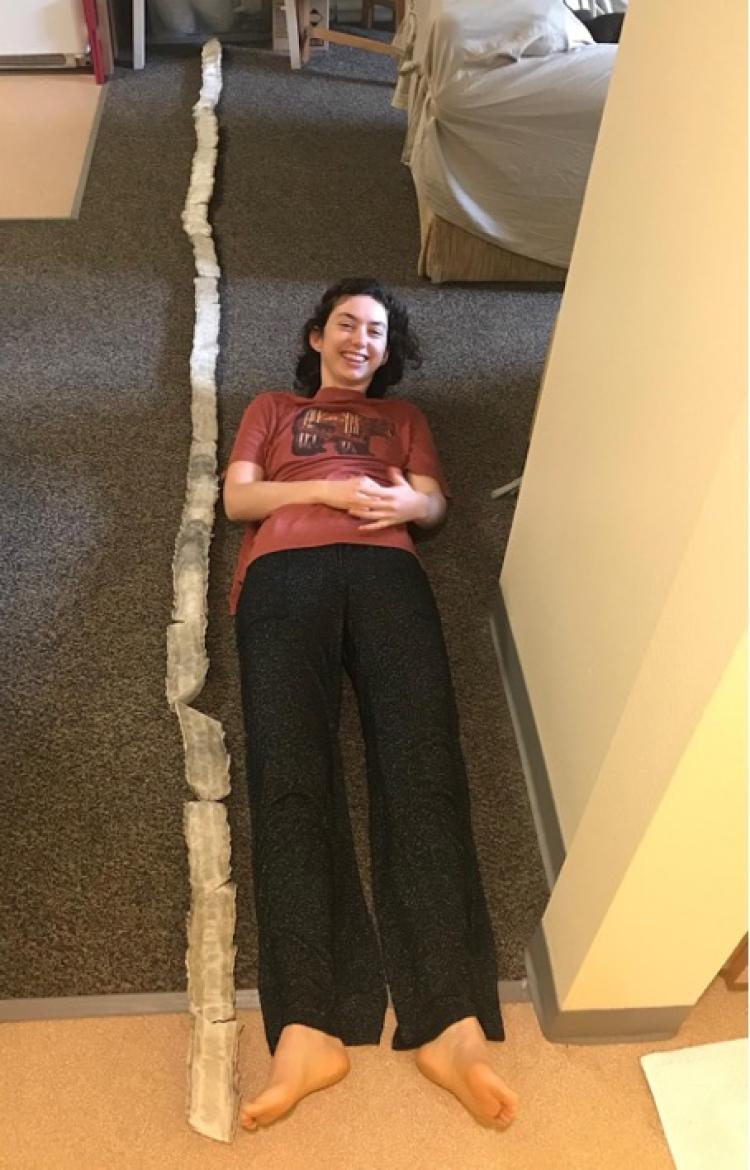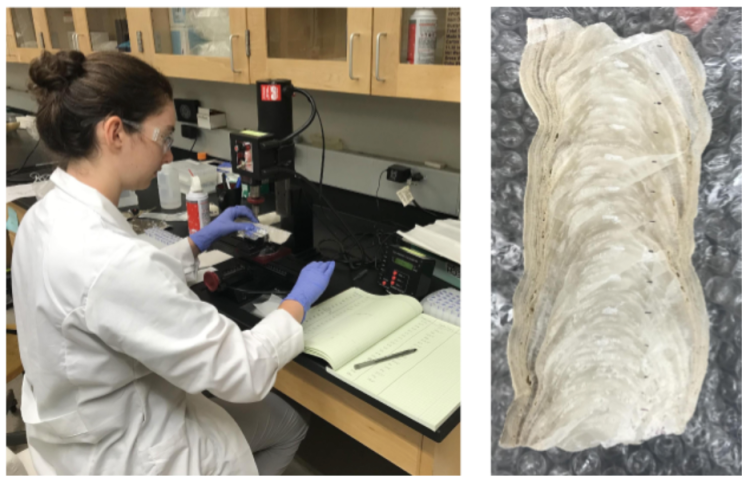Elizabeth Patterson - Project Profile
2020 AGeS awardee
Lab: The McGee Lab for Paleoclimate and Geochronology
Lab Mentors: David McGee
What scientific question(s) does your research address and what motivates this work?
I use stalagmites from central Vietnam to reconstruct the Southeast Asian autumn monsoon over the last 45,000 years. Relatively small changes in rainfall amount can have large-reaching impacts on the densely populated region of Mainland Southeast Asia. In central Vietnam, tropical cyclones and heavy rainfall during autumn have cause devastating flooding throughout the region. For my research, I seek to better understand the Southeast Asian autumn monsoon variability, a system that is severely understudied in the paleorecord. To generate records of the autumn monsoon from stalagmites, I measure a variety of geochemical tracers of hydroclimate including stable isotopes (oxygen and carbon) and trace elements (Mg/Ca). I also use climate model output to identify the controls driving Southeast Asian autumn monsoon variability.

Figure 1: Photos from our field site in Phong Nha Ke Bang National Park in central Vietnam. Left: Me in front of my cave site. Middle: We found a broken stalagmite in this cave and spent ~30 minutes piecing it back together. It was like a puzzle! Right: Collecting cave drip water as a part of our cave monitoring research.
What chronometric tool did you employ and why?
I used U-Th dating to date my stalagmite sample. U-Th dating is a reliable and commonly used technique for dating cave deposits. Ground water transports uranium into a cave where it is incorporated into a stalagmite as it grows. Over time the uranium in the cave deposit radioactively decays into thorium, creating a dependable chronometer for the last 500,000 years. For my work I used ~30 U-Th dates to generate a 45,000 year, precisely-dated age model for my stalagmite sample.
What were some of the key takeaways of your research?
- The Southeast Asian autumn monsoon was variable over the last 45,000 years, with evidence for wet conditions during Holocene and dry conditions during the Last Glacial Maximum
- Sea level change (modulated by ice sheet size) is the primary control on Southeast Asian autumn monsoon variability. Drier conditions occur during periods of low sea level and vice versa.

Figure 2: Me with my 4m stalagmite in my apartment during COVID lockdown. We were very fortunate to collect this sample in early March 2020, but by the time I returned to California, everything was shut down. So naturally I brought this sample home with me, where I conducted some of the early stages of my research for my dissertation.
What new experiences, opportunities, and collaborations did you gain as an AGeS-Grad awardee?
Since my award coincided with the early days of the COVID-19 pandemic, I was unable to travel to my partner institution to complete my analyses. Instead, a postdoc currently working in the lab ran the samples for me. As a substitute for a hands-on experience, the postdoc and I had several Zoom conversations where we talked through the U-Th dating process. This involved sample preparation, running the mass spectrometer, and working up the data. While this was an unconventional way to learn about a new technique, I do feel that I have a much better understanding of U-Th dating. Through this process, I formed a lasting relationship with both the postdoc and the lab group. We continue to collaborate beyond the scope of this project.
What is one piece of advice you have for future AGeS-Grad award applicants or awardees?
Be flexible and have multiple plans. Instruments break, pandemics happen, your first plan is often not the one that comes to pass.

Figure 3: Drilling a section of the stalagmite with a micromill. We then run these powders to through mass spectrometers to measure stable isotopes and trace element. Right: One section of the stalagmite sample cut in half. If you look carefully, you can see the layers of the stalagmite as well as the markings from where I drilled my samples.

